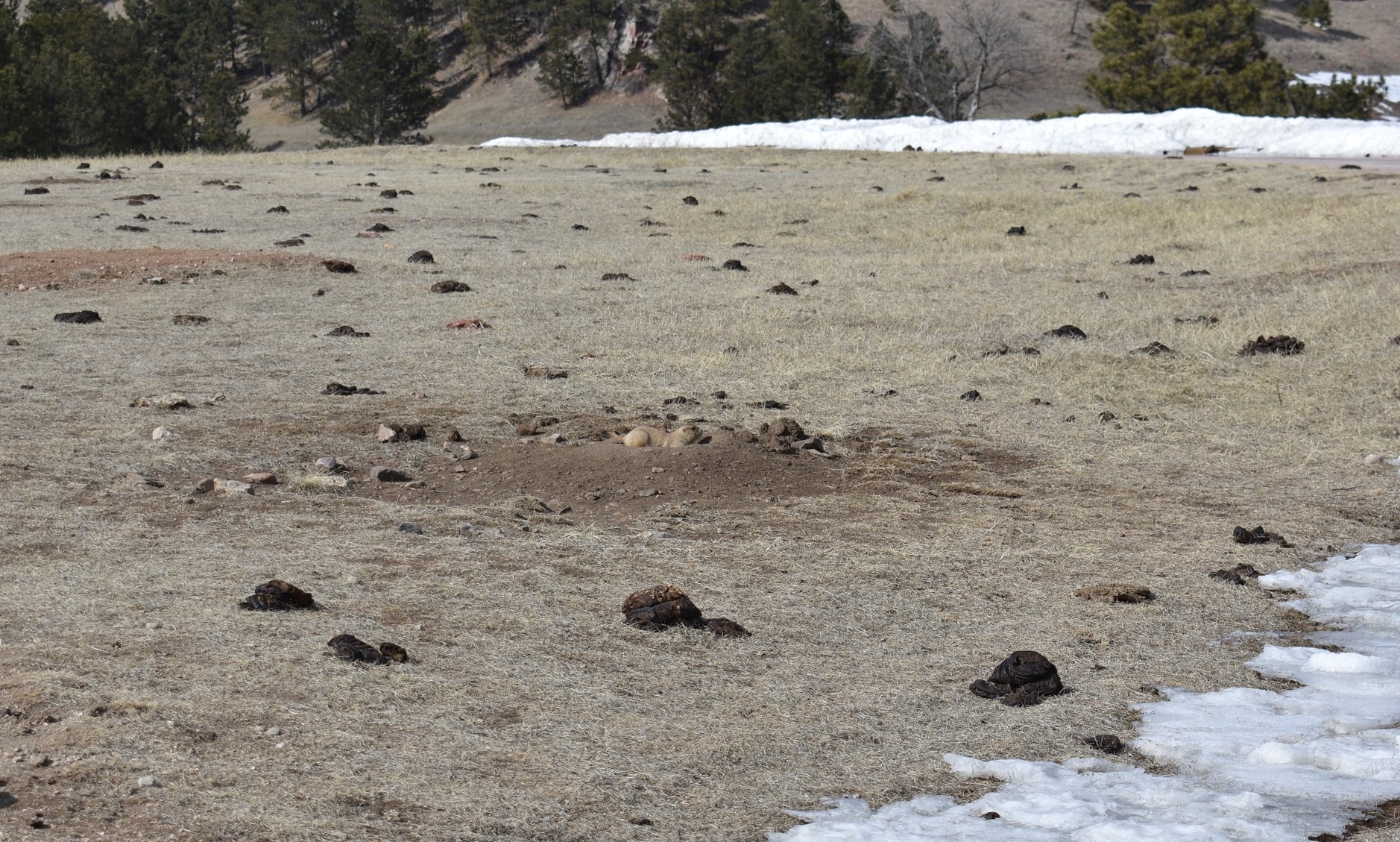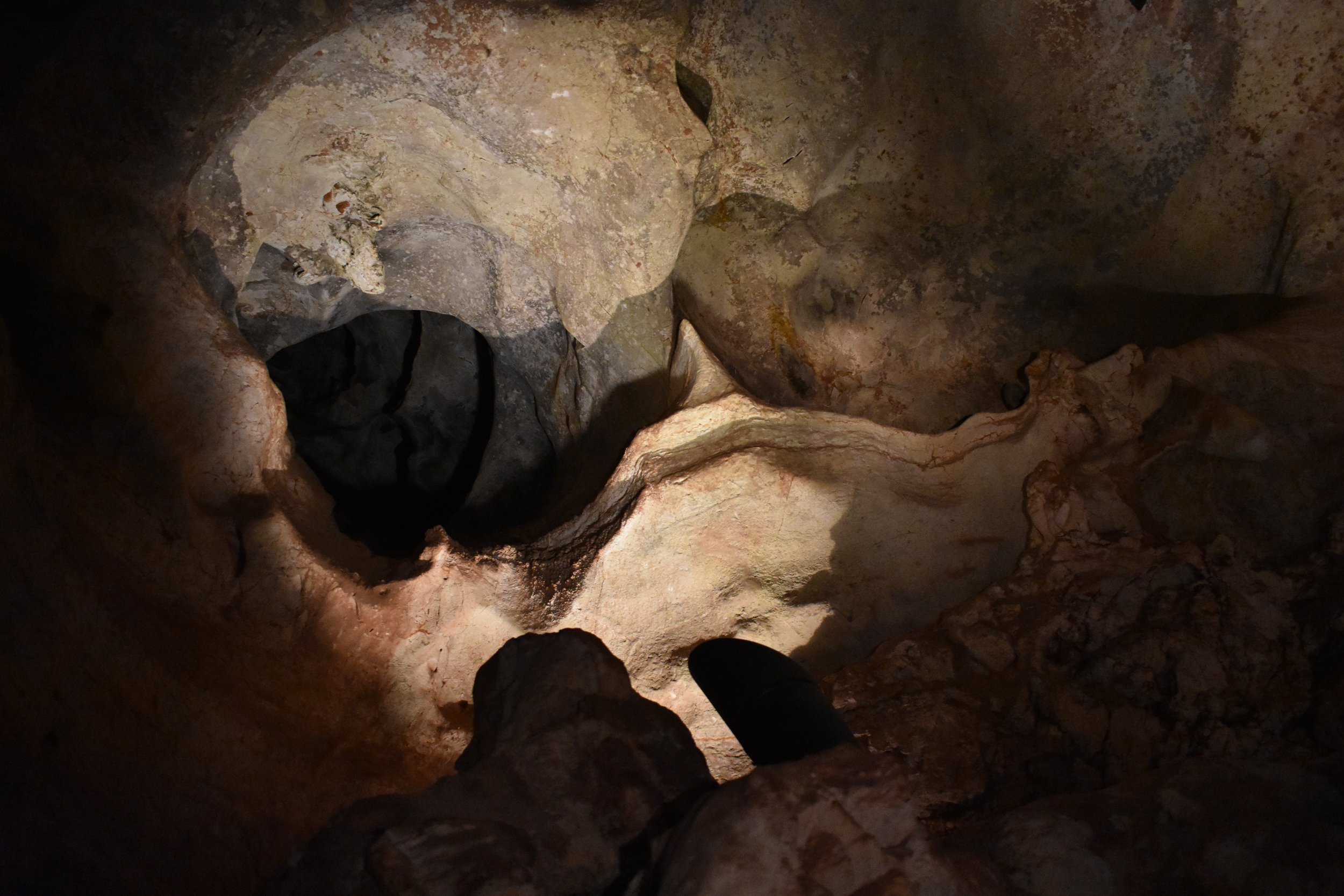Wind Cave National Park: Touring the world's densest cave and seeing 95 percent of the earth's boxwork
According to Lakota tradition, Wind Cave is where their people's souls emerged from the earth before their creation event. They held the site as sacred, aware of its existence long before brothers Tom and Jesse Bingham stumbled upon the natural entrance, an inexplicably windy hole in the ground, in 1881. By 1903, it had become America's first cave designated as a national park.
During our short trip to South Dakota this March, my friend Mary and I traveled to Wind Cave National Park on a comparatively warm day (I didn't even need a scarf!). Aside from being the sixth-longest cave and the densest cave in the world, the park also includes the largest remaining natural mixed-grass prairie in the United States. It's this prairie that greets you first—and if you're as excited by animals as Mary and I are, you'll slam on the brakes for every scenic pull-off as you drive to the Welcome Center. We saw prairie dogs up close, mesmerized by their chittering and hilarious popping up and down into their burrows. Bison free roamed across the road, their coats still thick and fleecy for winter. We even caught a coyote stalking prairie dogs across the plains!
From the Welcome Center, you can buy tickets for a tour of the cave. Mary and I took the Garden of Eden tour, the only tour offered in early March, and were offered a private view of the cave courtesy of going in off-season! We took an elevator down to the manmade entrance, marveling at the wind trying to blow the door open. This unique noticeably strong wind is how the cave got its name: air continually moves into or out of the cave, equalizing the atmospheric pressure of the cave and the outside air. Because Wind Cave is so large and the entrances are so small, this wind is more powerful and concentrated than other caves. About 1,000,000 ft³ of air is exchanged with the outside every hour.
Another noticeable feature of this cave is the silence. When the tour guide did the usual "Let's see how the early explorers would have viewed the cave" spiel, turning off the electric lights and plunging us into complete darkness, it took only moments for the sound of our breathing to become deafening. There were no insect noises, no animal movements, just the sound of dripping water and our breathing. Then, the guide lit a single candle, casting looming shadows onto the writhing millions-of-years-old formations. According to the guide, stories circulated about early explorers who, within hours of becoming lost, were able to hear their own heartbeats because of the intense silence. The thump of their heartbeats transformed into footsteps of rescuers that would never come. Our guide then asked in the flickering candlelight, "But would you be excited or scared by the sound of the footsteps? Because there's no light coming with them." That one gave me shivers, and I was glad when she turned the lights back on.
By far, the most impressive part of Wind Cave was the unique cave formation known as boxwork, pictured above. It looks like honeycombs at times, spider webs at others. Wind Cave contains a whopping 95 percent of the world's discovered boxwork. This fascinating formation alone makes Wind Cave a must-see for both science nerds (like me) and travelers alike.
Take a look at the photos of our trip to Wind Cave National Park below! You can expand and view them in slideshow format by clicking on any individual photo.
Bison and Prairie Dogs
Smooth stone Carved by slow-moving water
"Popcorn" formations
Water is able to dissolve a small amount of limestone rock as it passes through cracks and pores on its journey down into the cave. Excess calcium is then precipitated on the cave walls and ceilings to make up many of the different kinds of formations. Most calcium is precipitated in the cave as the mineral calcite.
Boxwork Formations
The origin of boxwork remains one of the biggest mysteries of Wind Cave. One theory is that the limestone and dolomite bedrock of Wind Cave was removed by weathering as the ocean that covered the region receded, revealing the intricate boxwork inside. The veins in which the boxwork formed were along narrow fractures resulting from stresses produced when the mineral gypsum dried and rehydrated. The calcite formed in these fractures took on the shape of the original gypsum crystals, resulting in honeycomb boxwork formations.
Unlike other cave formations like popcorn or stalactites, which are forming as we speak through precipitation or flowing water, boxwork was created before the cave itself. That means that the amount of boxwork that currently exists is all we have.
Signatures of early explorers written on the cave wall
Thanks for reading! Don't forget to hit "like" down below, and check out my posts about Mt. Rushmore, Custer State Park, and Badlands National Park!


























